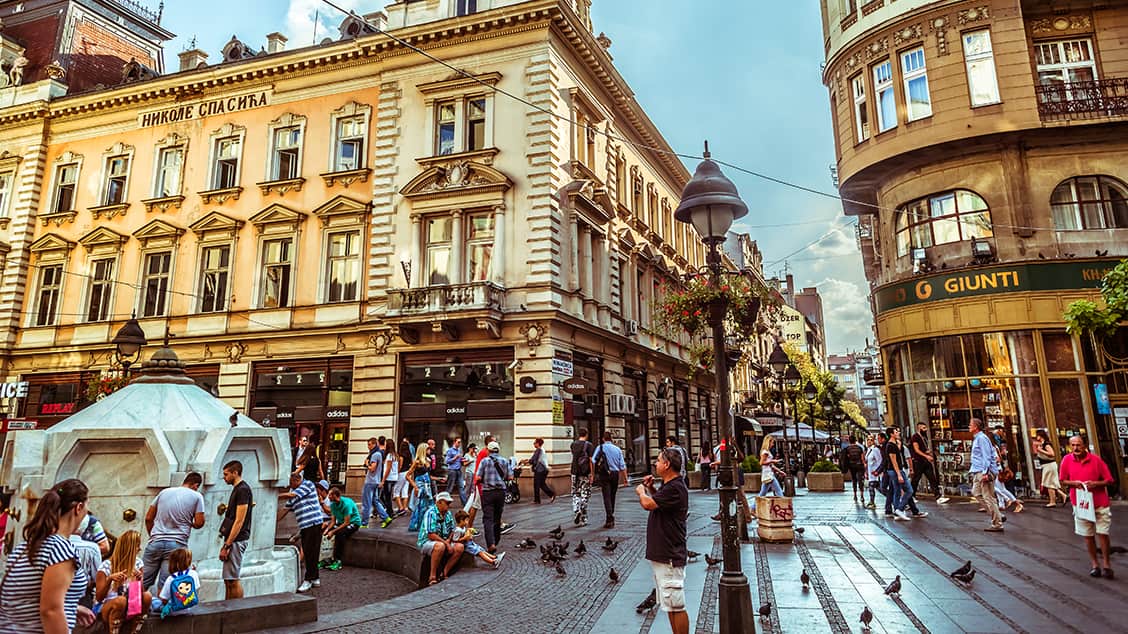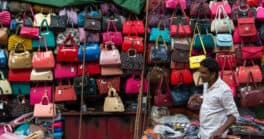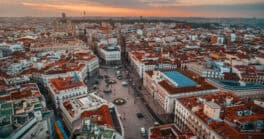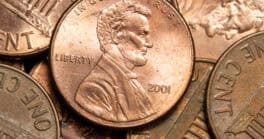When Serbia hits the news headlines, it is usually for the wrong reasons. Look a little closer however, and another—quite surprising—story emerges.
“Since Covid-19, Serbia has been one of emerging Europe’s better performers,” says Paul Gamble, senior director in the Sovereign Group at Fitch Ratings. “The government has rationalized spending, enabling it to reduce debt, which has been backed up by strong growth and investment. The FDI story is a good one, with inflows typically equivalent to 5% to 7% of GDP, while the business operating environment is positive.”
A recent IMF report concluded that while Serbia’s economy—like others across emerging Europe—has been hit by the rise in food and energy prices, with challenges including “continuing global financial instability and uncertainties over trading partner growth,” it has also shown resilience and budgetary restraint, with the 2.2% of GDP deficit planned for 2024 “consistent with a conservative policy stance.” The IMF is expected to reach agreement by end 2023 on the second review of its Stand-by Arrangement (SBA).
Compared with regional peers, Serbia’s growth has held up, with GDP expected to rise around 2% this year and 3.5% the next, close to the medium-term potential of 4% a year. Inflation is expected to drop from 8% this year to 5.6% in 2024 and 4% in 2025. Meanwhile, the current account deficit should fall below 2.5% by end 2023, while forex reserves are over €24 billion.
Serbia’s success story dates further back than post-Covid. Over the past 15 years, Belgrade has followed a successful program of economic reform that has helped overhaul one of Southeast Europe’s more moribund economies. It has diversified away from light manufacturing and agribusiness—the traditional mainstays of its economy—toward information and communication technology (ICT), the information economy and new technologies. Serbia recently signed a memorandum of understanding with Ginkgo Bioworks of the US to launch a startup accelerator for bioeconomic engineering. And Ananas, the e-commerce division of Serbia’s Delta group, has expanded into North Macedonia, acquiring two local e-commerce groups—Grouper and Paopao—in a first step toward larger-scale regional expansion, with its aim of becoming the Amazon.com of the Balkans.
Gamble says ICT is now the fastest-growing sector, boosted by inflows of young Russians—around 200,000, according to media reports—keen to escape being drafted into that country’s war on Ukraine and enabled, by the nature of the industry, to easily relocate and set up a new business. Indeed, Russian and Ukrainian business registration in Serbia has jumped dramatically since Moscow’s invasion of its neighbor, with young professionals clearly wanting to avoid the war and benefit from Serbia’s EU links. According to the Serbian Business Registers Agency, some 1020 Russian-owned companies were established in Serbia in 2022, against just 82 in 2021.
| Vital Statistics |
| Location: South-eastern Europe |
| Neighbors: Montenegro, Croatia, Bosnia-Herzegovina, Romania, Kosovo, North Macedonia, Hungary, Bulgaria, Albania. |
| Capital City: Belgrade |
| Population (2021): 6.6 million |
| Official language: Serbian |
| GDP per capita (2021): $11,300 |
| GDP size: $75 billion |
| GDP growth (2022): 2.3%; 2% expected for 2023 |
| Inflation (2022): 12.4; 8% expected by end 2023 |
| Unemployment rate: 9.5% |
| Currency: Dinar |
| Investment promotion agency: Development Agency of Serbia (ras.gov.rs). |
| Investment incentives: There is a wide range of incentives including tax exemptions for investing in free zones, in undertaking investment in manufacturing in green and brownfield sites, for spending on R&D. 10-year corporate tax holidays are available for projects employing over 100 people/investing over €8.5m; discounts available on construction land prices on projects deemed to be of national importance. |
| Corruption Perceptions Index tank (2022): 101 (out of 180 countries) |
| Credit Rating: BB+ (Fitch Ratings) |
| Political Risk: Although Serbia has prioritised economic reform and better relations with the EU, politics is dominated by the nationalist Serbian Progressive Party which controls the presidency and government, and has pro-Russian, autocratic tendencies. |
| PROS |
| Location: Serbia dubbed “the crossroads of the Balkans”. |
| Diversified economy; commitment to economic reform; massively upgraded infrastructure, with modern road system |
| Stabilisation and Association Agreement with the EU; increasingly well integrated into western supply chains. |
| Cons |
| Although corruption and bureaucracy are less of a problem than they were, challenges remain with transparency. |
| Close relations with Russia suggest EU accession difficult to achieve in short term. |
Energy is another fast-evolving sector, with Serbia keen to reduce its use of inefficient and polluting lignite (which currently accounts for 70% of energy use), boost green energy and reform its loss-making energy monopolies. In March, Prime Minister Ana Brnabić unveiled plans to convert state-owned energy utilities Elektroprivreda Srbije and Srbijagas into joint stock entities, and then shift the focus to the loss-making state-owned railway companies.
“Without restructuring and a market-based way of doing business, it’s a bottomless pit and there is no upside for us,” she told a Belgrade business conference earlier this year.
Serbia’s growth has been helped by large-scale investment in roads and other infrastructure and by huge inflows of FDI—some $42 billion since 2007, according to the national investment agency RAS, and some $4.3 billion last year alone.
Much of that has come from the EU, especially into the auto and food industries, with European Commission President Ursula von der Leyen committing to supporting further investment in Serbia (and other East Balkan countries) during a visit in early November.
Energy is another fast-evolving sector, with Serbia keen to reduce its use of inefficient and polluting lignite (which currently accounts for 70% of energy use), boost green energy and reform its loss-making energy monopolies. In March, Prime Minister Ana Brnabić unveiled plans to convert state-owned energy utilities Elektroprivreda Srbije and Srbijagas into joint stock entities, and then shift the focus to the loss-making state-owned railway companies.
“Without restructuring and a market-based way of doing business, it’s a bottomless pit and there is no upside for us,” she told a Belgrade business conference earlier this year.
Serbia’s growth has been helped by large-scale investment in roads and other infrastructure and by huge inflows of FDI—some $42 billion since 2007, according to the national investment agency RAS, and some $4.3 billion last year alone.
Much of that has come from the EU, especially into the auto and food industries, with European Commission President Ursula von der Leyen committing to supporting further investment in Serbia (and other East Balkan countries) during a visit in early November.
“If you do the reforms, we will come with more investment,” she told Serbian President Aleksandar Vucic during a press conference in Belgrade.
China has also been stepping up its FDI activity, notably in the metals industry and in the huge vehicle tire industry in Zrenjanin. Serbia’s biggest FDI projects to date have been China’s Linglong Tire’s €1 billion investment in Zrenjanin in 2018, and Zijin Mining Group’s purchase of 63% of Mining and Smelting Combine Bor, also for €1 billion. Those were followed by subsequent Zijin acquisitions in Serbia’s mining sector, making China the nation’s biggest single foreign investor.
All this has helped underpin rising living standards and is transforming Serbia’s international reputation as a magnet for investment. With good connections to its neighbors, its labor is cheaper than Croatia. And the country is much less volatile than Bosnia, North Macedonia or Albania, with one of the most proactive foreign investment agencies.
But continued reforms are vital, says Peter Tabak, regional lead economist for the Western Balkans at the EBRD. “Serbia has benefited from near-shoring and from its Stabilization and Association Agreement with the EU. But, especially with skilled labor getting scarce and more expensive, the challenge will be raising the value-added component of what it produces. Boosting education and training is key, as are reforms in the system of public administration.”
Tabak says Belgrade also needs to focus on more infrastructure investment, notably in the railway, energy and wastewater sectors. “Belgrade also needs to do what it can to support local SMEs [small and midsize enterprises]—which are vital for Serbia’s becoming better integrated and positioned in the global value chain—and also agribusiness, as agriculture still accounts for 7% of GDP thanks to the country’s high-quality soil,” he says.
What does the future hold? On November 1, President Vucic unexpectedly called early parliamentary and mayoral elections for December 17; they had been scheduled for June, but Vucic and his Serbian Progressive party clearly hope their economic record will stand them in good stead with voters, especially with a divided opposition. As Global Finance went to press, few were expecting a change of government after the vote.
Eyes will also be on preparations for Expo 2027, to be held in Belgrade between May and October of that year. It will be the first time an Expo has been held in South-eastern Europe, with Serbia beating other contenders including Spain, Thailand and the US. Some €12 billion in investment is planned, including a new exhibition site, new stadiums, museums and river ports, and upgraded infrastructure. The event is expected to attract three million tourists.
“Expo 2027 will mean a quantum leap for the economy and will change the whole country, not just Belgrade,” said Vucic after Belgrade’s win was announced in June 2023.




